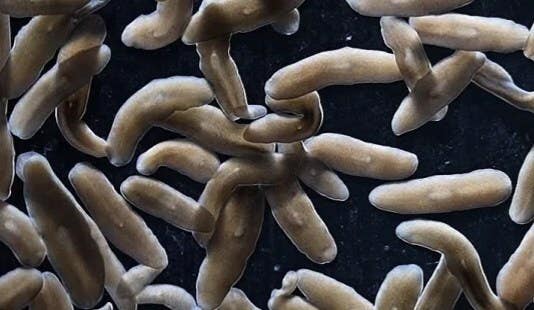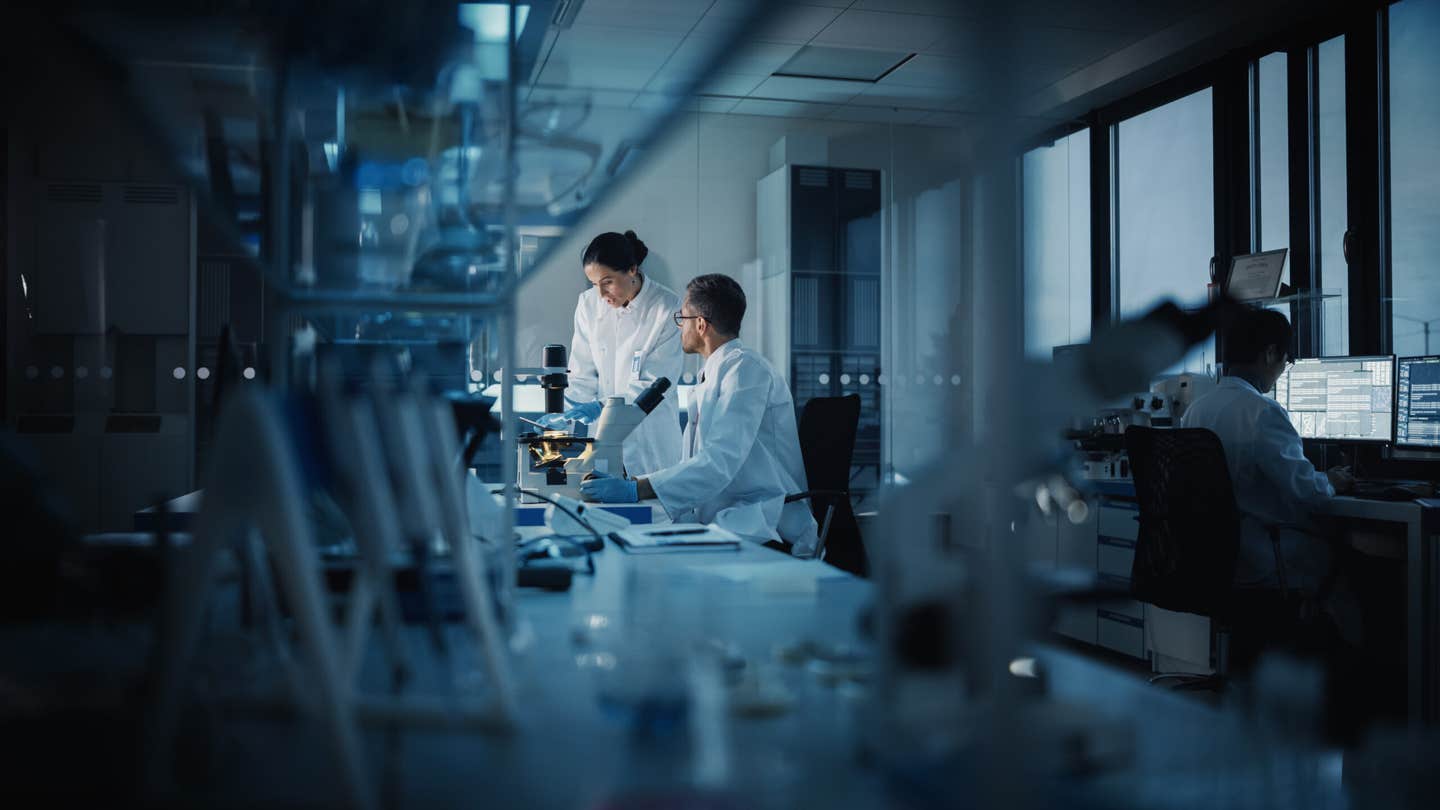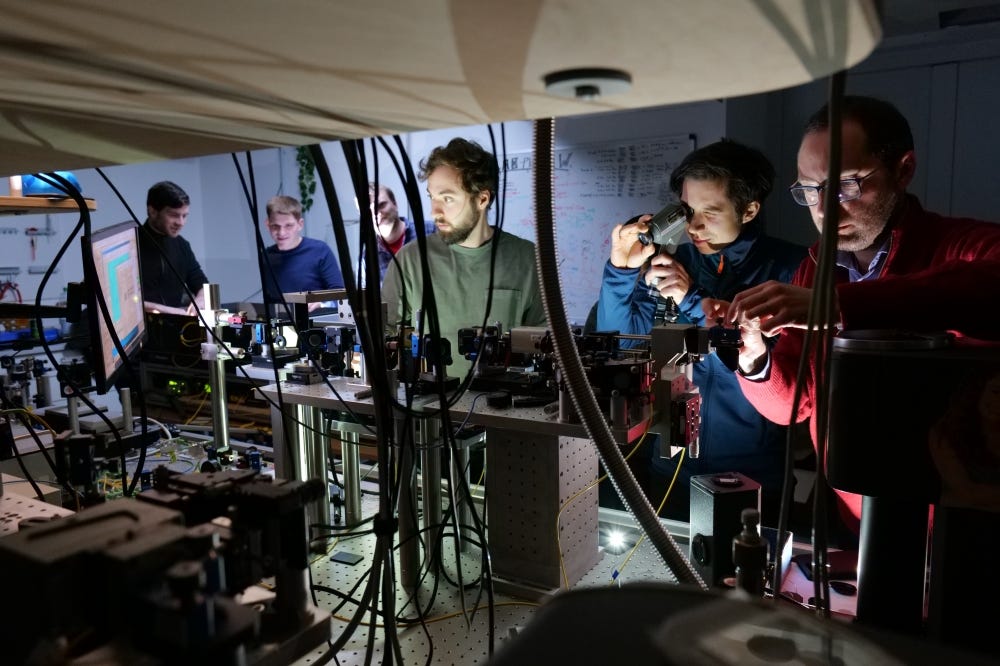Flatworms defy stem cell rules, offering a blueprint for human regeneration
Planarian flatworms reveal stem cells can regenerate without nearby niches, reshaping ideas about tissue repair.

For decades, scientists have studied planarians as the poster child for regeneration. (CREDIT: Stowers Institute for Medical Research)
A team of scientists has mapped the regions surrounding stem cells in planarians—small flatworms that are famous for being able to regrow whole bodies from small fragments—and discovered something amazing. Unlike in other animals, the stem cells in these worms don't seek advice from nearby "neighbours". Instead, they're being told what to do by far-off instructions from cells much farther away.
The research, published in Cell Reports, merges two strong technologies—spatial transcriptomics and single-cell RNA sequencing—to reveal a high-resolution blueprint of the cellular neighborhood that enables regeneration. Developed by Frederick "Biff" Mann, Ph.D., at the Stowers Institute for Medical Research, the work overturns how scientists perceive stem cell control and could one day influence how humans regenerate injured tissue.
Mapping the Flatworm's Regenerative Neighborhood
Scientists have been trying planarians out as the poster child of regeneration for years. Cut one up, and any fragment can regenerate to a complete worm. The secret lies in their neoblasts—adult stem cells that appear to have no limit on what they can do. But previously, researchers just didn't know exactly what kind of cells were surrounding these neoblasts or how those environments affected regeneration.
Traditionally, scientists have extracted stem cells from tissue and screened their genes in bulk to find them. That loses spatial information—basically erasing the "who's next to whom" map. In this study, Mann's laboratory used spatial transcriptomics, a fairly new technique that preserves this context.
They placed barcoded beads on fragments of planarian tissue. Each bead captured messenger RNA from surrounding cells, allowing later tracking of which genes were turned on and exactly where. With pre-existing single-cell data, this allowed the researchers to reconstruct not just which cells were present, but how they were arranged around stem cells—and how those arrangements shifted with regeneration.
A Neighborhood Like No Other
What they found was quite unexpected. Stem cells in planarians are not localized to a certain "niche" like human bone marrow stem cells. Instead, they are housed in a fluid, dynamic environment.
Among the cells that surround them, researchers spotted a few old friends—muscle cells that are specialized to provide positional signals, skin-forming progenitor cells, and partially differentiated stem cell descendants. But the biggest surprise lay in the discovery of a gigantic cell type that the researchers dubbed the "hecatonoblast," named after the Hecatoncheires, the many-handed Greek giants. These cells stretch out with finger-like projections that wind around surrounding tissues.
Because hecatonoblasts were side by side with stem cells, scientists guessed that they would dictate stem cell fate. But what they found was that these neighbors didn't matter. "We were surprised to discover that the hecatonoblasts weren't controlling the behavior of the stem cells," Mann said. "It's the intestinal cells—more distant than the hecatonoblasts—calling the shots."
Long-Distance Cellular Conversations
With the new geographic data, the researchers measured "co-localization scores," or how often certain cell types appear near stem cells by chance. Muscle cells had high scores, confirming they were near. But most significant wasn't distance—it was conversation.
By looking at which signaling genes were turned on, the researchers discovered that intestinal cells send strong molecular signals through well-known pathways including Wnt, FGF, Notch, and TGF-beta/BMP. These long-range signals appear to direct stem cells' decisions during regeneration—telling them where they are in the body and what kind of tissue to become.
"This is evocative of discovering a remote control system for stem cells," co-corresponding author Blair Benham-Pyle, Ph.D., assistant professor at Baylor College of Medicine and a former postdoctoral researcher at Stowers, said. "Local interactions might manage rapid, local responses, but global signals orchestrate the grand tour during regeneration."
Breaking the Niche Rule
The finding defies a fundamental assumption in stem cell biology—that all stem cells need a nearby "niche" of supportive cells in order to function. "In most animals, the niche is a micromanager, constantly sending orders to stem cells," Mann said. "But planarians don't play by those rules. Their stem cells seem to be incredibly self-sufficient."
That freedom might be the secret to the worms' incredible ability to regenerate. In human beings, stem cells are held in very strict control to prevent unchecked growth, causing cancer. Flatworms, though, appear to have discovered a way in which their stem cells regulate themselves but continue to have full powers of regeneration.
Alejandro Sánchez Alvarado, the president of the Stowers Institute and lead author of the study, sees broad implications. "This discovery compels us to recast our entire definition of what constitutes a stem cell niche," he said. "Discovering how planarian stem cells are so plastic might ultimately instruct us on how to promote tissue repair in humans without inducing dangerous growth."
A Dynamic, Moving Environment
Perhaps most astonishingly, the planarian stem cell niche is not fixed—it's dynamic. Stem cells seem to build and rebuild their own neighborhoods as they migrate and proliferate.
"The environment in which stem cells live is actually made up of the 'friends' they and their offspring make along the way," Sánchez Alvarado said. "That's a basic shift in how we think about tissue organization."
As it regenerates, the researchers found, certain types of cells cluster near stem cells for a time. Support cells and signaling partners initially cluster together to coordinate the repair. Then, as tissues re-form, those groups disperse again, returning to their normal state. It's an evolving matrix of interactions—like a construction site that assembles, does its work, and disperses.
Building a Molecular Blueprint for the Future
Along with delineating these neighborhoods, the researchers built maps of potential communication loops between stem cells and their neighbors. The scientists discovered pairs of ligand and receptor—molecular handshakes—that might be dictating regeneration. For instance, a muscle cell may issue a Wnt signal that is received by a nearby stem cell, while a far-off intestinal cell issues FGF signals that tell the same stem cell to multiply.
Although these loops remain on paper for now, they give scientists a roadmap for future experiments. "It's an exciting hypothesis-generating tool," said Benham-Pyle. "We can now test in a specific way what the major signals are and how far their effects actually go."
The Promise and Challenge Ahead
Despite the breakthrough, the team acknowledges limitations. Spatial transcriptomics, as potent as it is, has finite resolution, and proximity does not always equal communication. "Just because two cells are side by side doesn't mean they're communicating," Mann said. "But it tells us where to start searching."
Still, the overall message is unequivocal: regeneration isn't a matter of having stem cells—it's about how those cells interpret and respond to their environment, nearby and far.
Practical Implications of the Research
The findings have implications that extend much further than flatworms. By demonstrating how some organisms regenerate without fixed niches, scientists can explore new ways for stimulating human stem cells to repair damaged organs. If scientists figure out how to control planarian stem cells automatically, one day physicians could cultivate tissue or repair injuries more effectively.
Sánchez Alvarado hopes that this discovery brings regenerative medicine one step closer to being a reality. "The more we understand how cells talk to each other all over the body," he said, "the better we can design therapies that tap into our own potential for healing."
Research findings are available online in the journal Cell Reports.
Related Stories
- Researchers discover the ideal temperature for a healthier and more regenerative sleep
- Bee-stinger microneedle patch speeds wound healing with smart monitoring
- Revolutionary self-healing hydrogel regenerates like human skin
Like these kind of feel good stories? Get The Brighter Side of News' newsletter.
Rebecca Shavit
Science & Technology Journalist | Innovation Storyteller
Based in Los Angeles, Rebecca Shavit is a dedicated science and technology journalist who writes for The Brighter Side of News, an online publication committed to highlighting positive and transformative stories from around the world. With a passion for uncovering groundbreaking discoveries and innovations, she brings to light the scientific advancements shaping a better future. Her reporting spans a wide range of topics, from cutting-edge medical breakthroughs and artificial intelligence to green technology and space exploration. With a keen ability to translate complex concepts into engaging and accessible stories, she makes science and innovation relatable to a broad audience.



